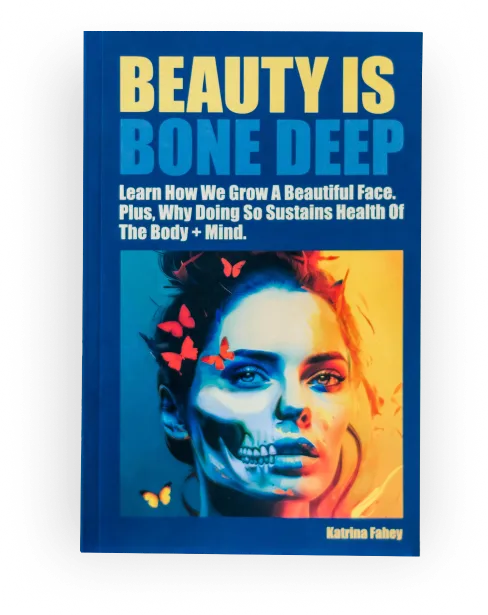When it comes to treating a vaulted palate and mouth breathing, it is crucial to seek professional help from a qualified healthcare provider. A vaulted palate refers to an abnormally high arch in the roof of the mouth, which can lead to various issues such as speech difficulties, dental problems, and even breathing difficulties.
Additionally, mouth breathing, often associated with a vaulted palate, can have detrimental effects on overall health and well-being. To treat a vaulted palate, a healthcare provider may recommend orthodontic intervention, such as braces or expanders, to gradually expand the upper jaw and create more space in the mouth. This can help alleviate the pressure on the palate and improve speech and breathing patterns. In severe cases, surgical intervention may be needed to correct the vaulted palate. Mouth breathing, on the other hand, can often be a habit formed as a result of a vaulted palate or other underlying issues. It is important to address mouth breathing as it can lead to a range of problems, including dry mouth, bad breath, and increased risk of dental issues. Furthermore, mouth breathing can impact the proper development of the face and jaw, potentially leading to facial asymmetry or misalignment.
To treat mouth breathing, the underlying cause must be identified and addressed. This may involve working with a multidisciplinary team, including orthodontists, speech therapists, and ENT specialists, to determine the root cause and develop an appropriate treatment plan. This may include orthodontic interventions, myofunctional therapy, or even surgical procedures, if necessary. In conclusion, treating a vaulted palate and mouth breathing requires expert knowledge and medical intervention. Seeking professional help is crucial for proper diagnosis and treatment planning. By addressing these issues, individuals can experience improved speech, breathing, and overall oral health.
Professional Evaluation and Diagnosis
Professional evaluation and diagnosis is a crucial process in various industries and sectors, allowing experts to assess and determine the condition, performance, or effectiveness of a particular system, product, or individual. This systematic approach not only helps identify strengths and weaknesses but also provides valuable insights and recommendations for improvement. In fields such as healthcare and psychology, professional evaluation and diagnosis are essential for accurate assessment and treatment of patients. A thorough evaluation allows healthcare professionals to gather comprehensive data, analyze symptoms, and make a precise diagnosis, ensuring appropriate and timely interventions.
Furthermore, in business and organizational settings, evaluation and diagnosis play a fundamental role in managing performance, identifying areas for growth, and making informed decisions. By assessing various aspects such as financial performance, market trends, or employee satisfaction, professionals can identify strengths and weaknesses, helping organizations adapt and thrive in a competitive landscape. Additionally, evaluation and diagnosis are vital in fields such as education and research, enabling educators and scholars to assess learning outcomes, analyze data, and draw meaningful conclusions. By employing standardized evaluation methods and diagnostic tools, professionals can objectively evaluate the effectiveness of instructional strategies and research studies, ultimately contributing to the advancement and improvement of their respective fields.
In conclusion, professional evaluation and diagnosis are indispensable processes that provide valuable insights and recommendations, enabling experts to make informed decisions, improve systems, and enhance overall performance. Whether it is healthcare, business, education, or other sectors, the systematic evaluation and diagnosis approach is critical for success and growth.
Non-Invasive Therapeutic Approaches
Non-invasive therapeutic approaches have become increasingly popular in recent years, offering effective treatment options without the need for surgery or invasive procedures. These approaches focus on promoting healing and overall well-being, utilizing techniques that are gentle, safe, and non-disruptive to the body. One of the most widely known non-invasive therapeutic approaches is acupuncture, which involves the insertion of fine needles into specific points on the body to stimulate energy flow and restore balance. This ancient practice has been proven to be effective in treating a wide range of conditions, from chronic pain and migraines to anxiety and insomnia. Another non-invasive therapeutic approach gaining recognition is chiropractic care, which focuses on restoring proper alignment of the musculoskeletal system through manual adjustments and spinal manipulation. This approach has shown great results in relieving back pain, headaches, and improving overall mobility.
In addition to these techniques, other non-invasive therapeutic approaches include massage therapy, physical therapy, and herbal medicine. Massage therapy uses various techniques to promote relaxation, relieve muscle tension, and improve circulation. Physical therapy focuses on restoring mobility, strength, and function through exercises and rehabilitative techniques. Herbal medicine utilizes natural remedies and plant extracts to address various health concerns.
Overall, non-invasive therapeutic approaches offer patients safe and effective treatment options, providing an alternative to traditional medical interventions. These approaches facilitate the body’s natural healing mechanisms, promoting long-term wellness and overall quality of life.
Orthodontic Interventions
Orthodontic interventions are vital for patients seeking to achieve a straighter and healthier smile. These interventions are focused on correcting dental and facial irregularities, such as misalignment of the teeth or jaws. Orthodontists, who specialize in this field, utilize various techniques and appliances to help patients achieve optimal dental health and aesthetics. One common orthodontic intervention is the use of braces. Braces are made up of brackets, wires, and bands, which work together to gently move the teeth into their desired positions.
This intervention is highly effective in addressing issues such as overcrowding, gaps between teeth, and misaligned bites. Braces can be customized to meet the unique needs of each patient, ensuring a comfortable and efficient treatment. Another popular orthodontic intervention is the use of clear aligners. These are transparent, removable trays that gradually shift the teeth into proper alignment. Clear aligners offer a discreet and convenient alternative to traditional braces. Patients can easily remove them for eating, brushing, and flossing, allowing for better oral hygiene during the treatment process.
In some cases, orthodontic intervention may include the use of additional appliances, such as headgear or palatal expanders. These devices help to correct more severe dental and skeletal irregularities. Orthodontists carefully assess each patient’s specific dental needs to determine the most appropriate interventions for their unique situation. Overall, orthodontic interventions play a crucial role in improving the oral health and overall well-being of patients. By addressing misalignments and irregularities, orthodontists can help patients achieve not only a beautiful smile but also better oral function and improved self-confidence. Seeking professional orthodontic treatment is a wise investment in one’s dental health, resulting in long-term benefits and a lifetime of smiles.
Addressing Mouth Breathing Habits
Addressing Mouth Breathing Habits: Promoting Optimal Health and Well-being Mouth breathing habits, although seemingly innocuous, can have significant implications for one’s overall health and well-being. The act of breathing through the mouth instead of the nose can lead to a myriad of problems, including dental issues, sleep disturbances, and even cognitive impairments. Therefore, it is crucial to address and rectify this habit in order to promote optimal health. One of the primary concerns associated with mouth breathing is its impact on oral health. Breathing through the mouth can cause dryness, leading to a decrease in saliva production and an increased risk of tooth decay and gum disease. Additionally, mouth breathers are more likely to develop an abnormal bite, known as malocclusion, which can further exacerbate dental issues. By addressing mouth breathing habits, individuals can prevent these oral health complications and maintain a healthy and functional smile.
Furthermore, mouth breathing can significantly impact sleep quality. Breathing through the nose allows for optimal oxygen exchange, promoting better sleep and overall well-being. In contrast, mouth breathing can lead to snoring, sleep apnea, and restless nights. By addressing mouth breathing habits, individuals can enjoy more restful sleep, increase their energy levels, and improve their overall quality of life.
Finally, studies have shown a correlation between mouth breathing and cognitive impairments. Oxygen deprivation resulting from mouth breathing can affect brain function, leading to difficulties in concentration, memory, and overall cognitive performance. By addressing mouth breathing habits, individuals can enhance their cognitive abilities, leading to improved productivity and performance in various aspects of life.
In conclusion, addressing mouth breathing habits is essential for promoting optimal health and well-being. By rectifying this habit, individuals can prevent dental issues, improve sleep quality, and enhance cognitive function. It is crucial for individuals to seek professional guidance and undertake proactive measures to address mouth breathing habits and maintain a healthy and functional lifestyle.
Breathing Exercises and Nasal Hygiene
In today’s fast-paced world, maintaining optimal health and well-being is of utmost importance. One aspect that is often overlooked but plays a crucial role in our overall health is respiratory health. Breathing exercises and nasal hygiene are two key practices that can greatly enhance our respiratory well-being. Breathing exercises are an effective way to improve lung function, increase oxygen intake, and reduce stress levels. These exercises involve deep inhalation and exhalation techniques, helping to strengthen the diaphragm muscles and expand lung capacity. By focusing on our breath, we can calm the mind, improve concentration, and promote a sense of inner tranquility. Incorporating these exercises into our daily routine can also aid in managing respiratory conditions such as asthma, chronic obstructive pulmonary disease (COPD), and allergies.
Nasal hygiene is vital for maintaining a healthy respiratory system. Our nose acts as a natural filter, trapping dust, allergens, and other harmful particles. Regular nasal hygiene practices such as nasal irrigation and cleaning help to remove these irritants and keep the nasal passages clear. This promotes better breathing, reduces the risk of respiratory infections, and improves overall sinus health. Moreover, practicing nasal hygiene can alleviate symptoms of nasal congestion, snoring, and sleep apnea.
In conclusion, incorporating breathing exercises and nasal hygiene practices into our daily lives can significantly enhance our respiratory health and overall well-being. By taking the time to focus on our breath and maintaining proper nasal hygiene, we can experience improved lung function, reduced stress levels, and better overall respiratory health. These simple yet powerful practices are essential components of a comprehensive approach to maintaining optimal health in today’s fast-paced world.
Myofunctional Therapy
Myofunctional therapy is a specialized form of therapy that focuses on correcting and retraining the muscles of the face and mouth. It aims to improve overall oral function and promote proper breathing, swallowing, and speech patterns. This therapy is conducted by trained professionals, such as myofunctional therapists or speech-language pathologists, who have expertise in assessing and treating disorders related to the muscles of the orofacial complex. The main goal of myofunctional therapy is to address any abnormal oral habits or dysfunctions that may be present. These could include tongue thrusting, improper swallowing, open mouth posture, or tongue tie. By targeting these specific issues, myofunctional therapy can help to improve oral health, enhance facial aesthetics, and optimize overall body function. During a myofunctional therapy session, the therapist will guide the individual through a series of exercises and techniques that are designed to strengthen and retrain the muscles of the face and mouth. These exercises may include tongue exercises, lip exercises, and various swallowing techniques.
Additionally, the therapist may provide education on proper oral hygiene practices and tips for maintaining good oral health. Myofunctional therapy has been shown to be effective in treating a wide range of conditions, including tongue tie, sleep apnea, temporomandibular joint disorder (TMJ), and speech disorders. By addressing the underlying muscular issues, individuals can experience improved breathing, reduced pain and discomfort, enhanced speech clarity, and better overall oral and physical health.
In conclusion, myofunctional therapy is a valuable and specialized form of therapy that focuses on correcting and retraining the muscles of the face and mouth. It offers numerous benefits, including improved oral function, enhanced facial aesthetics, and overall body function optimization. By working with a trained professional, individuals can address and overcome a variety of oral and muscular issues, leading to better health and quality of life.
Administering Corrective Oral Devices
Administering Corrective Oral Devices: Ensuring Optimal Patient Care through Professional Expertise Administering corrective oral devices is a crucial aspect of dental care that requires the utmost professionalism and expertise. Dental professionals play a vital role in ensuring optimal patient care throughout the process. Corrective oral devices, such as braces and dental appliances, are designed to correct dental irregularities and improve overall oral health.
The process of administering corrective oral devices begins with a comprehensive evaluation of the patient’s dental condition. Dental professionals meticulously assess the alignment of teeth and jaws, identifying any malocclusion or misalignment. This evaluation is imperative in determining the appropriate corrective oral device best suited to address the specific needs of the patient. Once the evaluation is complete, dental professionals proceed with the meticulous placement and adjustment of the corrective oral device. This requires a high level of skill and precision to ensure that the device fits comfortably and functions optimally. Regular check-ups and adjustments are crucial throughout the process to monitor progress and make any necessary modifications.
Furthermore, dental professionals also play a pivotal role in educating patients on proper care and maintenance of their corrective oral devices. Patients receive detailed guidance on oral hygiene practices and dietary restrictions to promote the longevity and effectiveness of the device. Additionally, they are provided with information on the expected duration of treatment and potential side effects, ensuring they are well-informed and prepared for their journey towards a healthier and more confident smile.
In conclusion, administering corrective oral devices is a specialized area of dental care that requires the expertise and professionalism of dental professionals. Through meticulous evaluation, precise placement, regular adjustments, and comprehensive patient education, dental professionals ensure optimal care and outcomes for their patients. By addressing dental irregularities, these corrective oral devices contribute to improved oral health and enhanced quality of life.
How Proper Breathing Techniques Benefit Facial Development
Proper breathing techniques play a crucial role in the development of facial muscles and overall facial structure. The way we breathe directly affects the positioning and functioning of our facial muscles, which in turn impacts the aesthetics and health of our face. Firstly, proper breathing allows for optimal oxygen intake, which is essential for the growth and development of facial bones and tissues. By taking deep breaths through the nose and fully expanding the lungs, more oxygen reaches the face, promoting the production of collagen and elastin, two proteins responsible for maintaining the elasticity and firmness of the skin.
Moreover, correct breathing techniques help improve facial symmetry and balance. When we breathe through the nose, the air is naturally filtered, humidified, and warmed, minimizing the risk of irritants entering the respiratory system. Nose breathing also activates the diaphragm, the primary muscle responsible for breathing, which leads to a more even distribution of pressure on the face, reducing the likelihood of developing asymmetrical features or a crooked smile. Additionally, proper breathing encourages correct tongue posture, which is vital for facial development. When the tongue rests on the roof of the mouth, it helps shape the upper jaw and palate, leading to proper tooth alignment and eliminating the need for orthodontic treatments in some cases. This correct tongue posture also prevents mouth breathing, which can lead to a myriad of facial issues such as a long face shape, a weak chin, and a gummy smile.
In conclusion, adopting proper breathing techniques not only benefits our respiratory system but also significantly contributes to the development of our facial muscles and overall facial structure. From promoting oxygen intake and collagen production to ensuring facial symmetry and balanced pressure distribution, proper breathing techniques are a fundamental aspect of maintaining a healthy and aesthetically pleasing face.
Promoting Proper Oral Posture
Promoting proper oral posture is crucial for maintaining optimal oral health and overall well-being. Oral posture refers to the alignment and positioning of the jaw, tongue, lips, and teeth when at rest and during various activities such as eating, speaking, and breathing. When these structures are not aligned properly, it can lead to various oral health problems, including tooth decay, gum disease, malocclusion, and temporomandibular joint disorders. To promote proper oral posture, it is essential to educate individuals on the importance of correct tongue posture, which involves resting the tongue at the roof of the mouth, just behind the front teeth. This position helps to maintain proper alignment of the jaw and teeth and aids in proper breathing and swallowing. Regularly practicing correct tongue posture can strengthen the orofacial muscles and prevent issues such as open bite, crossbite, and speech difficulties.
Furthermore, promoting proper lip posture is also essential for maintaining oral health. The lips should be relaxed and closed at rest, with the upper and lower lips gently touching. Proper lip posture prevents mouth breathing and aids in proper pronunciation while speaking. In addition to educating individuals, dental professionals play a crucial role in promoting proper oral posture. They can provide guidance and exercises to help patients develop and maintain correct oral posture. They can also identify any issues that may be caused by improper oral posture and recommend appropriate treatment options.
In conclusion, promoting proper oral posture is vital for maintaining optimal oral health and overall well-being. By educating individuals and working closely with dental professionals, we can ensure that individuals of all ages develop and maintain correct oral posture, leading to a healthier and more confident smile.
Enhancing Facial Symmetry
Enhancing Facial Symmetry: The Key to a Balanced and Harmonious Appearance Facial symmetry plays a crucial role in determining an individual’s attractiveness and overall appearance. As humans, we are naturally drawn to faces that exhibit a high degree of symmetry, as it is associated with health, beauty, and genetic fitness. However, not everyone is blessed with perfect facial symmetry, and various factors such as genetics, developmental issues, or accidents can disrupt the natural balance of the face. Fortunately, advancements in cosmetic procedures and technologies have made it possible to enhance facial symmetry and restore a more balanced and harmonious appearance. One popular method is the use of dermal fillers, which can address facial asymmetry by adding volume to specific areas, such as the cheeks, chin, or lips. By strategically placing fillers, a skilled practitioner can bring the face into better proportion, improving symmetry and creating a more aesthetically pleasing result.
Additionally, facial symmetry can also be enhanced through surgical procedures. Rhinoplasty, for example, can correct a deviated septum or misshapen nose, thereby improving facial balance. Similarly, procedures like facial implants or orthognathic surgery can realign the jaw and chin, creating a more symmetrical and proportionate facial structure. Beyond the realm of cosmetic procedures, non-invasive treatments such as facial exercises and specialized skincare regimens can also contribute to enhancing facial symmetry. These methods aim to strengthen facial muscles, improve circulation, and promote collagen production, ultimately leading to a more defined and symmetrical facial appearance.
In conclusion, enhancing facial symmetry is essential for achieving a balanced and harmonious appearance. Whether through dermal fillers, surgical interventions, or non-invasive treatments, individuals now have a range of options to address facial asymmetry and enhance their natural beauty. Consultation with a qualified professional is crucial to determine the most suitable approach based on individual needs and desired outcomes. With the help of these advancements, everyone can take a step closer to achieving their ideal facial symmetry and overall aesthetic goals.
Optimizing Orthodontic Treatment
Optimizing Orthodontic Treatment Orthodontic treatment plays a crucial role in improving the oral health and appearance of individuals. It involves the use of various techniques and appliances to correct misaligned teeth and bite issues. However, to ensure the effectiveness and efficiency of orthodontic treatment, it is necessary to focus on optimizing the entire process. First and foremost, a thorough examination and diagnosis are essential. Orthodontists should carefully evaluate the patient’s dental and facial structure to determine the most effective treatment plan. This can involve examining X-rays, taking impressions, and conducting comprehensive assessments. By gaining a deeper understanding of the unique needs and challenges of each patient, orthodontists can tailor their treatment approach accordingly.
Furthermore, the use of advanced technology can significantly enhance the optimization of orthodontic treatment. Techniques such as digital imaging and computer-aided design (CAD) allow orthodontists to create precise treatment plans and predict the final outcome. This not only reduces treatment time but also ensures better results. Additionally, digital tools facilitate effective communication between orthodontists and patients, enabling clear explanations, visual representations, and informed decision-making. Collaboration between orthodontic specialists and other dental professionals is also crucial in optimizing treatment. This interdisciplinary approach allows for a comprehensive evaluation of the patient’s oral health, including examining the condition of the gums, jaw joints, and overall dental wellness. By addressing any underlying issues or potential complications before commencing orthodontic treatment, the chances of a successful and smooth treatment process are significantly increased.
In conclusion, optimizing orthodontic treatment requires a comprehensive approach that encompasses thorough examination, advanced technology utilization, and interdisciplinary collaboration. By implementing these strategies, orthodontists can maximize treatment efficiency, improve patient satisfaction, and ultimately achieve superior oral health outcomes.
















